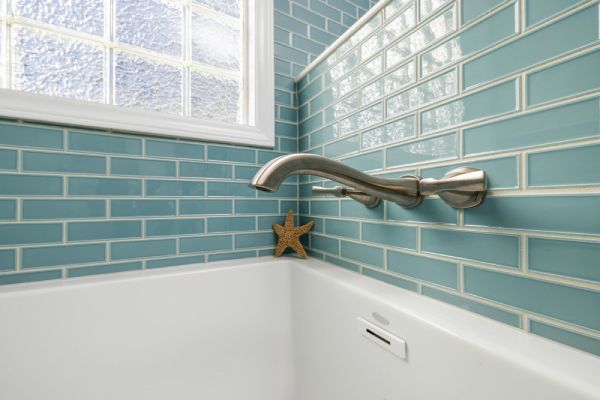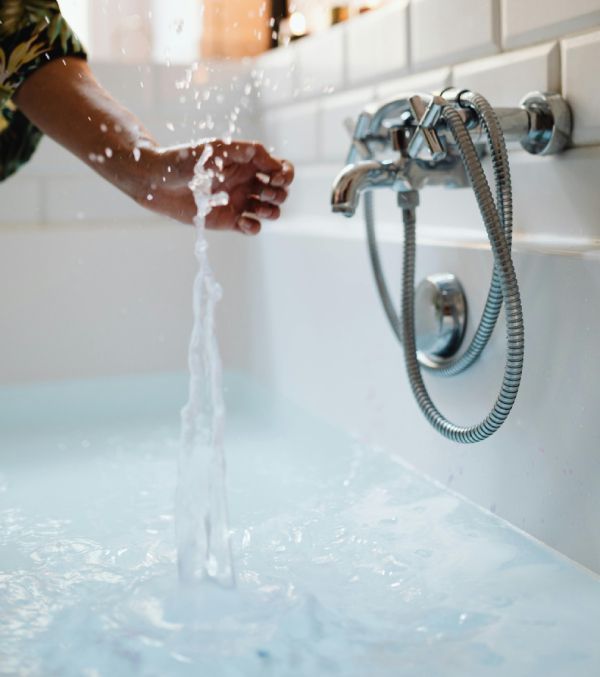Master Plumbers Blog
Top 7 Tips for Keeping Your Bathtub in Good Shape
There’s nothing quite like sinking into a warm bath at the end of a long, tiring day. The soothing heat eases muscle tension, and for a few moments, all the stresses of the day seem to melt away. It’s a simple way to unwind, making the bathtub more than just a functional bathroom fixture for many people. It becomes a space that transforms an ordinary bathroom into a sanctuary for relaxation.
Because of this, many homeowners take efforts in maintaining their bathtub’s appearance and functionality. Without proper care, tubs can develop stains, scratches, and even structural damage that may require costly repairs. Particularly in New Zealand, humidity levels can encourage mould and mildew growth. So, keeping a bathtub in good condition becomes even more important to ensure a clean, hygienic, and enjoyable space. Fortunately, with regular upkeep and a few preventive measures, you can keep your bathtub looking as good as new.
From simple cleaning techniques to ensuring proper drainage, this guide covers essential maintenance tips. If you ever encounter persistent plumbing issues, calling trusted Dunedin plumbers can help keep your bathtub in top shape.
1. Establish a Regular Cleaning Routine
One of the most important steps in maintaining your bathtub is establishing a consistent cleaning routine. A weekly clean helps prevent the buildup of grime, soap scum, and mineral deposits, which can be particularly troublesome in areas with hard water. Moreover, it reduces the risk of stubborn stains that can be difficult to remove if left unattended.
2. Avoid Using Harsh Chemicals
Although strong chemical cleaners may seem like an easy way to remove stains and grime, they often do more harm than good. Using harsh abrasives, bleach-based products, and acidic cleaners can wear down your bathtub’s finish over time, leading to dullness and scratches. Additionally, these chemicals can release harmful fumes, which may be unpleasant or unsafe, especially in poorly ventilated bathrooms.
Instead, opt for gentler cleaning solutions that preserve the integrity of your bathtub. If you need to tackle stubborn stains, a paste made from baking soda and water can be applied directly to the affected area.
3. Protect the Surface from Scratches and Stains
To keep your bathtub looking new, take precautions against scratches and stains. Avoid using rough sponges or steel wool as these can damage the finish and make the surface more susceptible to dirt buildup. When cleaning the tub, always use soft cloths or sponges to maintain the tub’s smooth texture.
4. Prevent Mould and Mildew Growth
New Zealand’s humid climate makes bathrooms a prime breeding ground for mould and mildew, which can be unsightly and pose health risks. The key to preventing mould is controlling moisture levels in your bathroom by ensuring proper ventilation. Keep windows open whenever possible; if your bathroom has an extractor fan, use it during and after baths to reduce humidity levels.
Another effective way to combat mould is to wipe down wet surfaces after every bath. This prevents water from sitting in corners and crevices, where mould tends to grow.
5. Ensure Proper Drainage Maintenance
A well-functioning drain is crucial for maintaining your bathtub’s condition. A clogged or slow-draining tub can result in standing water, which makes bathing unpleasant and leads to staining and potential damage to the tub’s surface. To prevent drainage issues, regularly clear out hair and debris that may accumulate in the pipes.
Using a drain strainer is also a simple yet effective way to catch hair and soap residue before they cause blockages. Additionally, pouring a mixture of hot (not boiling) water, baking soda, and vinegar down the drain once a month can help dissolve minor buildup naturally. If you frequently experience slow drainage despite regular cleaning, there may be a deeper blockage in your plumbing system. In such cases, it’s best to call a professional plumber to inspect and resolve the issue before it leads to more serious damage.
6. Regularly Inspect the Condition of Your Bathtub
Routine inspections can help you identify small issues before they turn into costly repairs. Every few months, take a close look at your bathtub for any signs of wear and tear. Cracks or chips, even if they seem minor, can worsen over time and result in leaks as well as potential structural damage. If you notice any surface damage, consider repairing it with a bathtub refinishing kit or consulting a professional to assess whether refinishing or replacement is more ideal.
Discolouration is another common issue, often caused by hard water stains, soap residue, or exposure to harsh cleaning agents. If your bathtub has started to yellow or develop stubborn stains, a deep clean with baking soda and hydrogen peroxide can help restore its original colour. For persistent stains, professional refinishing services may be needed.
7. Know When to Seek Professional Help
While many bathtub maintenance tasks can be handled on your own, there are times when calling in a professional is the best option. Such is the case with frequent drainage problems or unexplained leaks. Ignoring these issues can lead to more extensive water damage, potentially affecting other parts of your home. Additionally, if you’re planning to replace your bathtub or upgrade your bathroom, consult a professional to ensure the job is done correctly and efficiently.
Keeping a bathtub in good shape requires a combination of regular cleaning and professional service. You can start with these simple yet effective tips to ensure that your bathtub remains clean, functional, and visually appealing for years to come. If you notice any serious damage or plumbing concerns, don’t hesitate to call Mains Plumber. Our team of professional plumbers and
certified drainlayers can assess the condition of your bathtub and plumbing and ensure everything is working efficiently.
All Rights Reserved | Mains Plumbers (2004) Ltd








